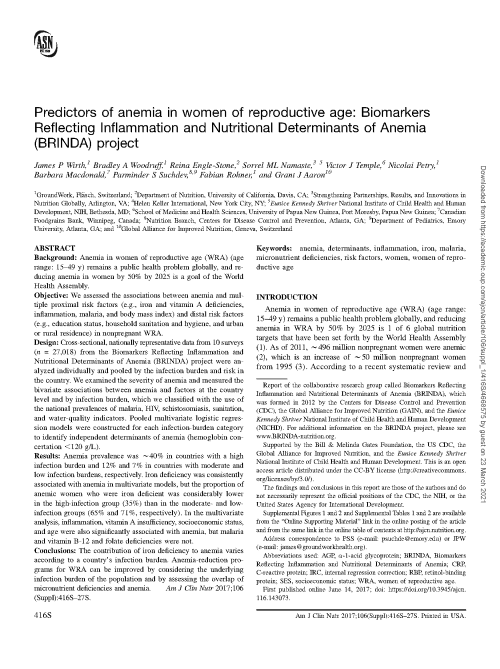This study used data from 10 cross-sectional, nationally representative data to assess the associations between anemia and multiple proximal (e.g., iron and vitamin A deficiencies, inflammation, malaria, and body mass index) and distal risk factors (e.g., education status, household sanitation and hygiene, and urban or rural residence) in nonpregnant women of reproductive age. Findings indicate a varying contribution of iron deficiency to anemia according to a country’s infection burden. The authors suggest that anemia-reduction programs for women of reproductive age can be improved by considering the underlying infection burden of the population and by assessing the overlap of micronutrient deficiencies and anemia.
